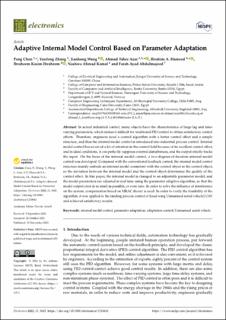| dc.description.abstract | In actual industrial control, many objects have the characteristics of large lag and time-varying parameters, which makes it difficult for traditional PID control to obtain satisfactory control effects. Therefore, engineers need a control algorithm with a better control effect and a simple structure, and thus the internal model control is introduced into industrial process control. Internal model control has received a lot of attention in the control field because of its excellent control effect, and in ideal conditions, it can perfectly suppress external disturbances, and the output strictly tracks the input. On the basis of the internal model control, a two-degrees-of-freedom internal model control was developed. Compared with the conventional feedback control, the internal model control structure mainly embeds an internal model consistent with the control object in the control object, so the deviation between the internal model and the control object determines the quality of the control effect. In this paper, the internal model is changed to an adjustable parameter model, and the model parameters are adjusted in real time using the parameter adaptive algorithm, so that the model output error is as small as possible, or even zero. In order to solve the influence of interference on the system, compensation based on MRAC theory is used. In order to verify the feasibility of the algorithm, it was applied to the landing process control of fixed-wing Unmanned aerial vehicle) UAV and achieved satisfactory results. | en_US |

